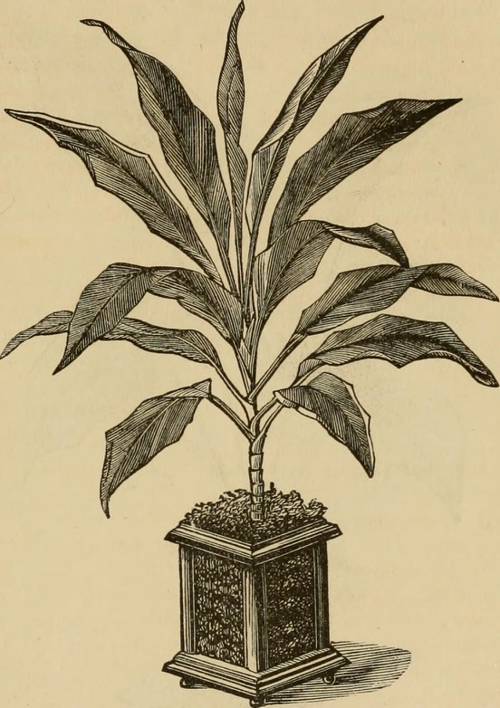
FAQ About Ecological Impact of Indoor Gardening

What is indoor gardening?
Indoor gardening involves growing plants inside a building such as a house or a greenhouse. It includes a variety of environments such as windowsills, containers, hydroponic systems, or fully enclosed grow rooms. This practice allows for plant cultivation year-round, irrespective of the external weather conditions.

How does indoor gardening impact energy consumption?
Indoor gardening can significantly impact energy consumption, primarily due to the need for artificial lighting, heating, ventilation, and air conditioning systems. These systems aim to mimic the natural conditions required for plant growth, which can lead to increased electricity usage. However, using energy-efficient LED grow lights and optimizing temperature settings can help reduce energy consumption.

Can indoor gardening be considered sustainable?
Indoor gardening can be sustainable if practiced with mindfulness towards resource use. Sustainable practices include using energy-efficient grow lights, reusing water and growing media, choosing organic pest control methods, and growing plants that contribute to air purification. Selecting plant species that require minimal resources can also enhance sustainability.

What role does indoor gardening play in biodiversity conservation?
Indoor gardening can support biodiversity conservation by cultivating rare or endangered plant species in a controlled environment, thus reducing the pressure on wild populations. Additionally, it encourages the preservation of plant genetic material and promotes awareness around biodiversity issues among gardeners and consumers.

Does indoor gardening help in reducing the carbon footprint?
Indoor gardening has the potential to reduce the carbon footprint by allowing local production of fresh produce, thus minimizing the need for transportation. Additionally, plants absorb carbon dioxide and release oxygen, which can contribute positively to the indoor air quality and help offset carbon emissions. However, if not managed with energy efficiency in mind, the benefits can be outweighed by high energy consumption.

What types of plants are most suitable for indoor gardening?
Plants that thrive indoors usually require low light, steady temperatures, and moderate humidity, such as spider plants, pothos, succulents, and herbs like basil and mint. Within an indoor setting, plants that require less water and can tolerate lower nutrient levels are also advantageous options for minimizing environmental impacts.

Are there any ecological downsides to indoor gardening?
Potential ecological downsides to indoor gardening include high energy usage, especially if non-renewable energy sources are used, and resource-intensive maintenance. Overuse of fertilizers and pesticides indoors can also lead to chemical runoff into water systems if not managed properly. Striving for more eco-conscious practices mitigates these issues significantly.

How can indoor gardeners reduce their water usage?
Indoor gardeners can reduce water usage by using techniques such as drip irrigation, which delivers water directly to the plant roots, or employing hydroponic systems that recirculate water. Additionally, capturing and reusing rainwater for indoor plants, selecting drought-tolerant plant varieties, and utilizing humidity trays can further conserve water.

What is the impact of indoor gardening on indoor air quality?
Indoor gardening can improve indoor air quality by increasing humidity and filtering pollutants. Plants like peace lilies, rubber plants, and snake plants are particularly effective at absorbing toxins such as formaldehyde and benzene from indoor air. This process not only cleans the air but also enriches it with oxygen, promoting better health and well-being.

How can indoor gardening contribute to food security?
Indoor gardening contributes to food security by enabling individuals to grow their own fresh produce, especially in urban areas where outdoor gardening space is limited. This can lead to a reduced dependency on commercial agriculture and ensure a steady supply of certain fruits, vegetables, and herbs directly from the home, enhancing nutritional diversity and availability.

What is hydroponics, and how is it used in indoor gardening?
Hydroponics is a method of growing plants without soil, using nutrient-rich water. This system is particularly beneficial for indoor gardening as it allows for controlled and efficient plant growth. Hydroponics reduces the need for large quantities of water and space, making it a sustainable option for urban indoor gardens.

Are there any specific techniques to enhance sustainability in indoor gardening?
Several techniques can enhance sustainability in indoor gardening, including using compost-based soil mixes, implementing vermiculture for natural fertilization, choosing LED lighting for energy efficiency, and employing integrated pest management to minimize chemical use. Additionally, selecting non-invasive plant species that naturally purify air can promote a sustainable indoor ecosystem.

How does indoor gardening affect mental health and well-being?
Indoor gardening has been shown to positively affect mental health and well-being by reducing stress, improving mood, and increasing focus. The act of caring for plants can be therapeutic, offering a sense of responsibility and satisfaction. The presence of greenery indoor can create a calming environment, contributing to overall emotional health.

What are the financial implications of starting an indoor garden?
Starting an indoor garden requires initial investments in equipment such as pots, grow lights, and suitable soil or hydroponic systems. The cost can vary significantly depending on the size and complexity of the setup. However, over time, indoor gardening can save money by reducing the need to purchase certain store-bought groceries and lowering heating costs through improved air insulation.

What lighting options are best for indoor gardening?
LED grow lights are considered one of the best options for indoor gardening due to their energy efficiency, longevity, and ability to provide the full spectrum of light required for various plant growth stages. They are more cost-effective in the long run than traditional fluorescent or incandescent lighting because they consume less energy and produce less heat.

Can indoor gardening help in education and awareness?
Indoor gardening serves as an educational tool by allowing individuals to learn about plant biology, ecosystem dynamics, and sustainability practices firsthand. Schools and educational institutions use indoor gardens to teach students about the importance of plants in the environment, food production, and eco-friendly technologies.

What materials can be reused or recycled in indoor gardening?
Numerous materials can be reused or recycled in indoor gardening, such as plastic pots, trays, and bottles that can serve as planting containers or irrigation aids. Old newspapers and cardboard can be used for seed starting or as weed barriers. Composting kitchen waste to create nutrient-rich soil can also minimize waste and enhance sustainability.

How does pest management work in an indoor garden?
Effective pest management in indoor gardens involves using natural remedies to combat pests, such as introducing beneficial insects like ladybugs or using neem oil sprays. Regular plant inspections, maintaining clean growing environments, and utilizing pest-resistant plant varieties can also help in managing pests without relying heavily on harmful chemicals.

What are the benefits of integrating aquaponics in indoor gardening?
Aquaponics combines aquaculture (raising aquatic animals) and hydroponics, offering a symbiotic environment where fish waste provides nutrients for plant growth. This system promotes sustainability by recycling water efficiently and reducing the need for chemical fertilizers, making it a beneficial addition to indoor gardening practices.

How do temperature and humidity control affect indoor gardening?
Temperature and humidity control are crucial for successful indoor gardening. Maintaining optimal levels ensures healthy plant growth and prevents issues such as mold or dehydration. Using humidifiers, dehumidifiers, or proper ventilation systems can help in regulating these parameters, creating an ideal environment for diverse plant species.
